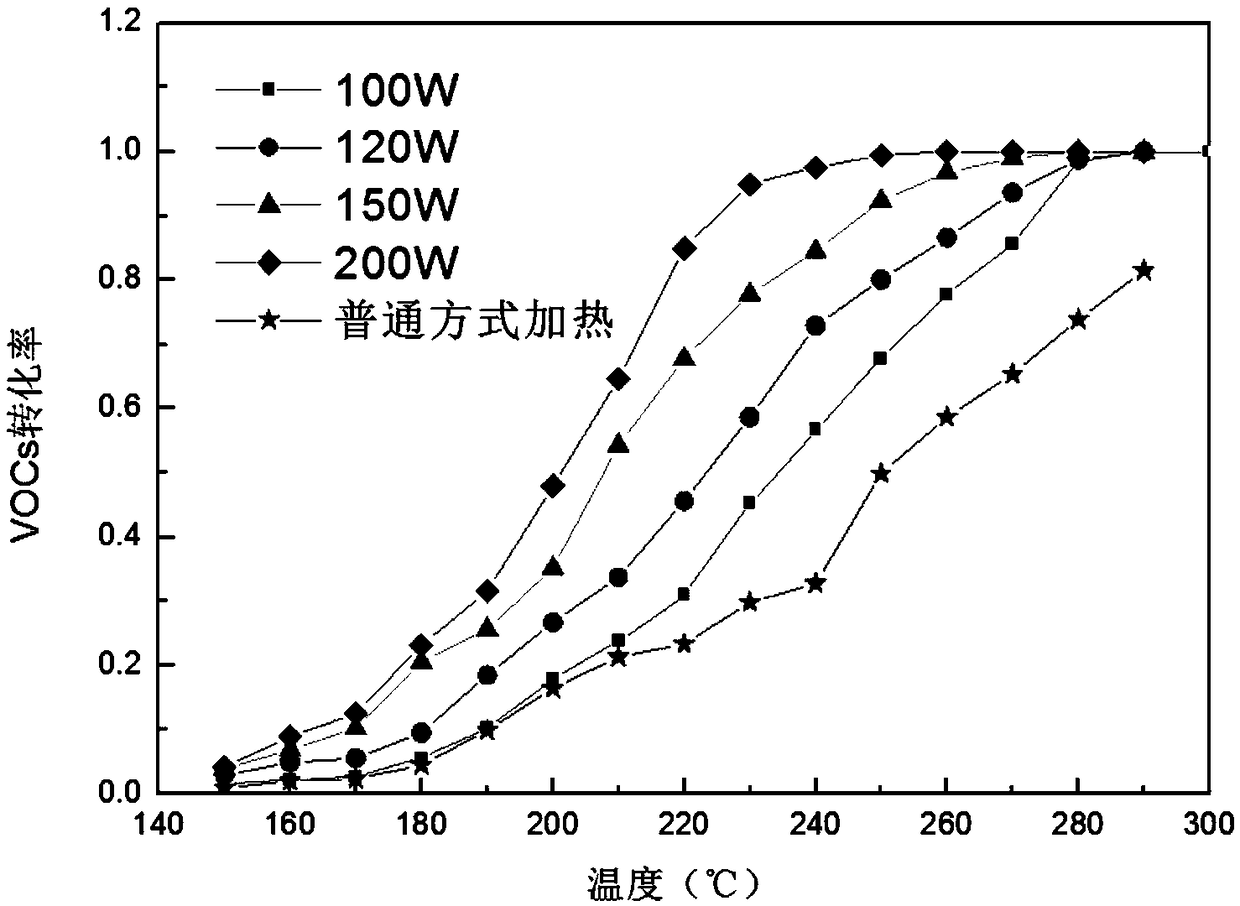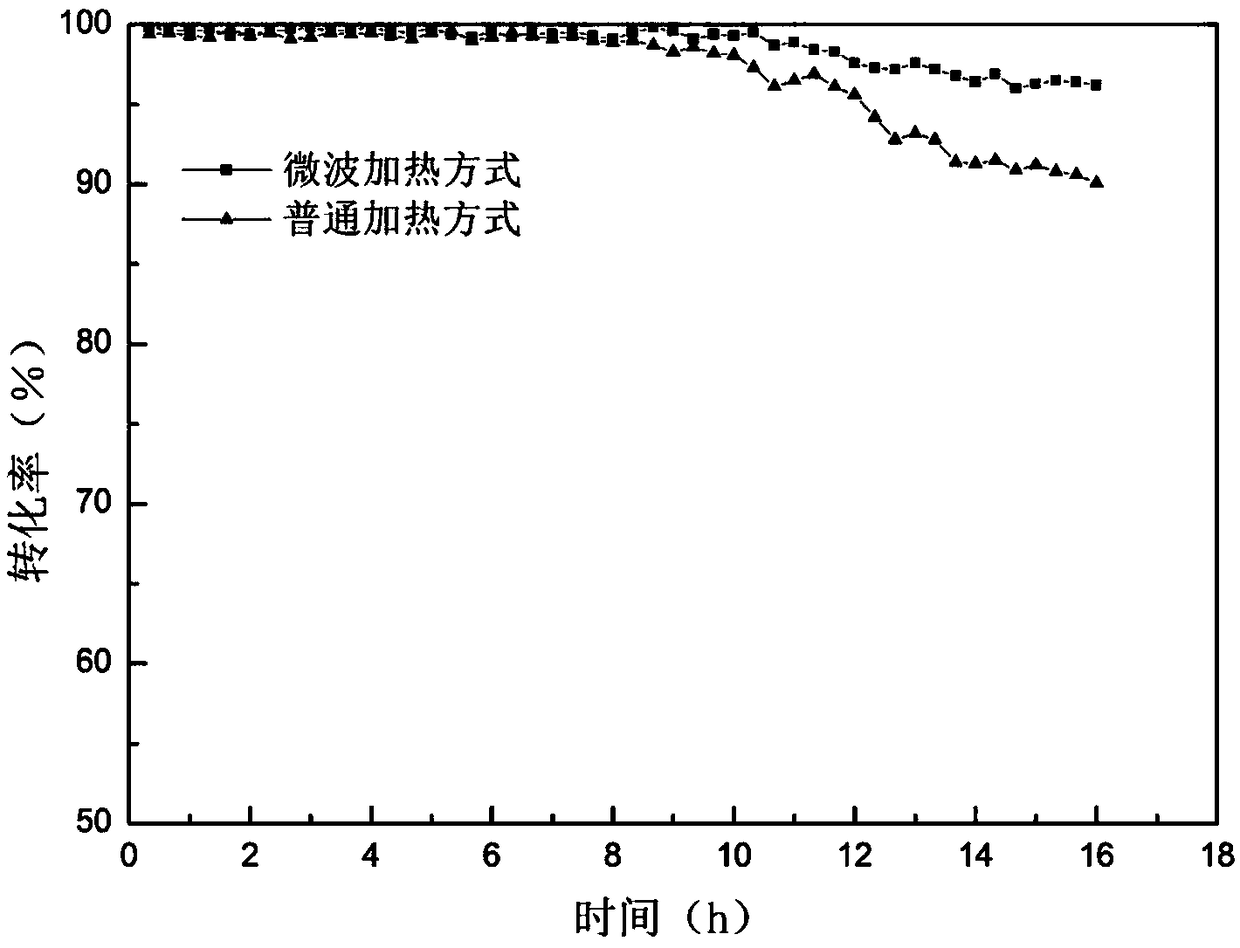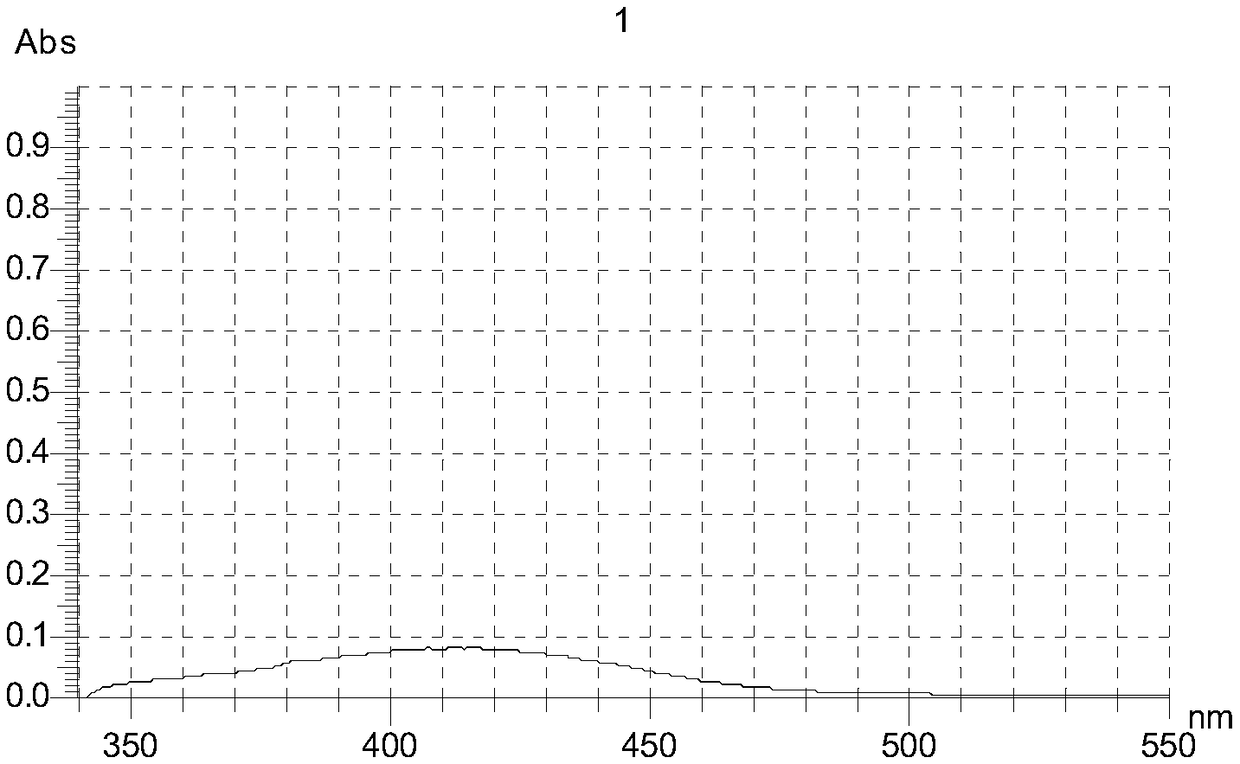Manganese oxygen composite material for efficiently removing VOCs and preparation method and application thereof
A composite material, manganese-oxygen technology, applied in separation methods, chemical instruments and methods, catalyst activation/preparation, etc., can solve problems such as not very obvious results, and achieve excellent continuous working ability, simple preparation method, and pollution-free products. Effect
- Summary
- Abstract
- Description
- Claims
- Application Information
AI Technical Summary
Problems solved by technology
Method used
Image
Examples
Embodiment 1
[0036] The preparation and application of a new type of composite material that efficiently removes VOCs, the specific steps are as follows:
[0037] Step 1: Add 5 g of carbon nanotubes to 50 mL of deionized water to form a solution, and stir at room temperature until the carbon nanotubes are completely dissolved;
[0038] Step 2: Add 0.10mol / L KMnO to the above solution 4 50 mL of the solution, and then add 0.01 moL of magnesium nitrate and 1.7895 g of manganese nitrate to the solution, react in an oven at 100°C for 2 hours, wash, filter, and dry to obtain a manganese-oxygen composite material.
[0039] Step 3: Mix and package the manganese-oxygen composite material and quartz sand at a mass ratio of 1:2, then put them into a microwave reactor, the microwave frequency is 2.45GHz±50MHz, the reaction temperature is 240°C, and the intake concentration of VOCs is 200ppm , the dry air is the equilibrium gas (about 21%O 2 , 79%N 2 ), the microwave power is 100W, and the inlet fl...
Embodiment 2
[0044] The preparation and application of a new type of composite material that efficiently removes VOCs, the specific steps are as follows:
[0045] Step 1: Add 5 g of carbon nanotubes to 50 mL of deionized water to form a solution, and stir at room temperature until the carbon nanotubes are completely dissolved;
[0046] Step 2: Add 0.20mol / L of KMnO to the above solution 4 50 mL of the solution, and then add 0.01 moL of magnesium nitrate and 1.7895 g of manganese nitrate to the solution, react in an oven at 120°C for 3 hours, wash, filter, and dry to obtain a manganese-oxygen composite material.
[0047] Step 3: After mixing and packaging the manganese-oxygen composite material and quartz sand at a mass ratio of 1:2, put them into a microwave reactor, the microwave frequency is 2.45GHz±50MHz, the reaction temperature is 240°C, and the intake concentration of VOCs is 300ppm , the dry air is the equilibrium gas (about 21%O 2 , 79%N 2 ), the microwave power is 100W, and the...
Embodiment 3
[0052] The preparation and application of a new type of composite material that efficiently removes VOCs, the specific steps are as follows:
[0053] Step 1: Add 5 g of carbon nanotubes to 50 mL of deionized water to form a solution, and stir at room temperature until the carbon nanotubes are completely dissolved;
[0054] Step 2: Add 0.30mol / L of KMnO to the above solution 4 50mL of the solution, and then add 0.01moL of magnesium nitrate and 1.7895g of manganese nitrate to the solution, react in an oven at 140°C for 4h, wash, filter, and dry to obtain a manganese-oxygen composite material.
[0055] Step 3: After mixing and packaging the manganese-oxygen composite material and quartz sand at a mass ratio of 1:2, put them into a microwave reactor with a microwave frequency of 2.45GHz±50MHz, a reaction temperature of 240°C, and an intake concentration of VOCs of 400ppm , the dry air is the equilibrium gas (about 21%O 2 , 79%N 2 ), the microwave power is 100W, and the inlet fl...
PUM
 Login to View More
Login to View More Abstract
Description
Claims
Application Information
 Login to View More
Login to View More - R&D
- Intellectual Property
- Life Sciences
- Materials
- Tech Scout
- Unparalleled Data Quality
- Higher Quality Content
- 60% Fewer Hallucinations
Browse by: Latest US Patents, China's latest patents, Technical Efficacy Thesaurus, Application Domain, Technology Topic, Popular Technical Reports.
© 2025 PatSnap. All rights reserved.Legal|Privacy policy|Modern Slavery Act Transparency Statement|Sitemap|About US| Contact US: help@patsnap.com



